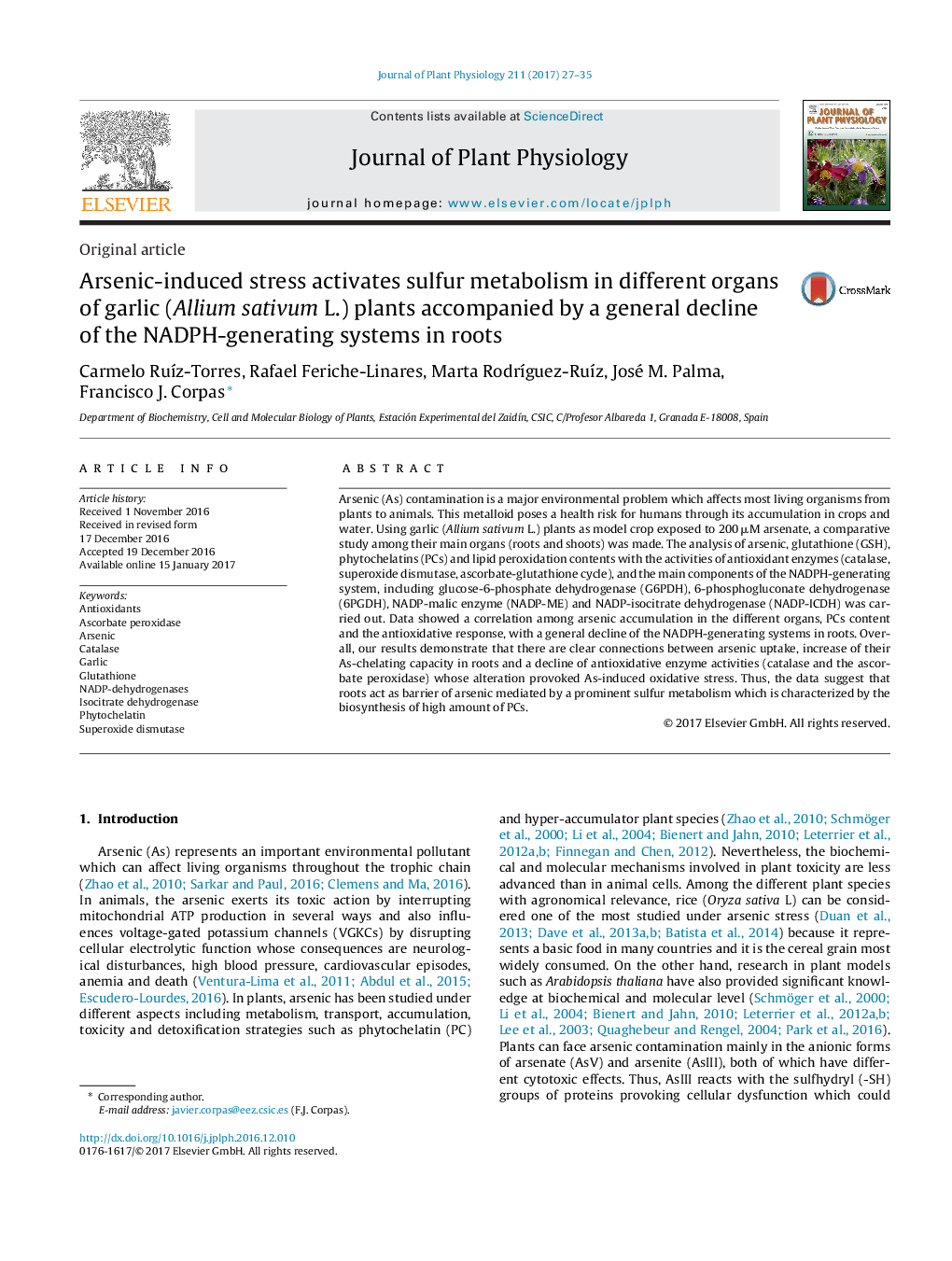| Article ID | Journal | Published Year | Pages | File Type |
|---|---|---|---|---|
| 5518055 | Journal of Plant Physiology | 2017 | 9 Pages |
Arsenic (As) contamination is a major environmental problem which affects most living organisms from plants to animals. This metalloid poses a health risk for humans through its accumulation in crops and water. Using garlic (Allium sativum L.) plants as model crop exposed to 200 μM arsenate, a comparative study among their main organs (roots and shoots) was made. The analysis of arsenic, glutathione (GSH), phytochelatins (PCs) and lipid peroxidation contents with the activities of antioxidant enzymes (catalase, superoxide dismutase, ascorbate-glutathione cycle), and the main components of the NADPH-generating system, including glucose-6-phosphate dehydrogenase (G6PDH), 6-phosphogluconate dehydrogenase (6PGDH), NADP-malic enzyme (NADP-ME) and NADP-isocitrate dehydrogenase (NADP-ICDH) was carried out. Data showed a correlation among arsenic accumulation in the different organs, PCs content and the antioxidative response, with a general decline of the NADPH-generating systems in roots. Overall, our results demonstrate that there are clear connections between arsenic uptake, increase of their As-chelating capacity in roots and a decline of antioxidative enzyme activities (catalase and the ascorbate peroxidase) whose alteration provoked As-induced oxidative stress. Thus, the data suggest that roots act as barrier of arsenic mediated by a prominent sulfur metabolism which is characterized by the biosynthesis of high amount of PCs.
